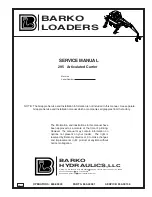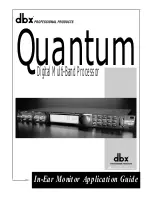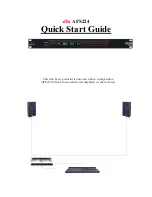
RUSKA 7252
Users Manual
2-8
In Gauge mode, if the Calibrator will not be used to control pressures at or very near
atmospheric pressure, then the Exhaust Port should simply be left open to atmosphere.
Likewise, in Absolute mode, if the Calibrator will not be used to control pressures at or
below atmospheric pressure, the same rule would apply. However, if the Calibrator will
be required to control to atmosphere in Gauge mode or sub-atmospheric pressures in
Absolute mode, then a vacuum pump must be connected to the Exhaust Port. Select a
vacuum pump with the test port volumes and system slew rates in consideration. The
minimum requirements are noted in Appendix A.
Pressure Control
Pressure control is performed by a dual-loop control system. The inner loop is a digital
loop using a high frequency response silicon strain gauge sensor, a digital controller, and
two pulse-width modulated solenoids. The two solenoids either add gas to the test port or
remove it. The outer loop provides closed-loop control, based on feedback from the
quartz Bourdon tube and an analog output setting which provides the desired set-point for
the inner loop.
Control Strategy
Inner vs. Outer Loops
The inner loop accepts a signal from the outer loop and uses this signal as the pressure
set-point. The inner loop uses a high frequency response strain gauge sensor as its
reference. The frequency response of this transducer allows for high speed modulation of
the solenoids. This sensor is aligned to the high accuracy quartz sensor when the system
is Auto-tuned.
The outer loop is a lower frequency response, analog-digital loop. The outer loop uses a
calibrated, forced-balanced sensor. This sensor is used to monitor the pressure of the
system. The results are used for the displayed pressure. The outer loop is responsible for
adjusting the signal sent to the inner loop to compensate for temperature and time drifts
associated with the inner loop sensor.
Normal Mode
In the Normal mode, minimizing pressure overshooting takes precedence over control
speed. In the Fast Mode, control speed takes precedence over overshooting the set-point.
In the Normal mode, the inner loop controls to the set-point using maximum rate until
close to set-point and then slowing down as the set-point is approached to minimize
overshoot. The outer loop continually adjusts the inner loop to compensate for
temperature and drift.
Fast Mode
This mode of operation assumes that the inner loop sensor and the outer loop are aligned.
When a new set-point is issued, the outer loop sends a signal that was determined to be
equivalent to the desired pressure. When the system detects that the pressure is
sufficiently close to the desired set-point, then the outer loop switches to the PID
algorithm.
This control mode results in the highest speed pressure control.
Summary of Contents for RUSKA 7252
Page 3: ...7252 Change Language Hold key for 5 seconds enter mode ...
Page 4: ......
Page 10: ...RUSKA 7252 Users Manual vi ...
Page 12: ...RUSKA 7252 Users Manual viii ...
Page 20: ...RUSKA 7252 Users Manual 1 6 ...
Page 40: ...RUSKA 7252 Users Manual 3 6 ...
Page 72: ...RUSKA 7252 Users Manual 4 32 ...
Page 114: ...RUSKA 7252 Users Manual 6 22 ...
Page 118: ...RUSKA 7252 Users Manual 7 4 ...
















































